In this month’s Between the Bookends, Sophie, Scott, and Rebecca review eight books they read during the spookiest month of the year.

The Black Veins by Ashia Monet
The Black Veins by Ashia Monet is a YA contemporary fantasy. When sixteen-year-old Blythe awakens one night unable to control her body and is forced to climb up to her roof and nearly throw herself off, everything changes. She and her family are magicians. In fact, Blythe is one of seven Guardians, hosts for nearly unlimited magical potential, but Blythe is yet to come into her powers, so when her family is kidnapped before her eyes by a rival government days later, she is powerless to stop it.
Her family’s magical government, The Black Veins, wants to send Blythe and the other Guardians into hiding, but Blythe refuses to abandon her family. Instead, she flees and sets off on a road trip to gather the other Guardians and recruit them to her rescue mission. There’s catty Cordelia, adorable Antonio, wannabe superhero Storm, plus the incredibly sheltered Daniel and ghostly Caspian.
As the teens travel across the magical world they must avoid powerful government forces as well as Common (non-magical) law enforcement and the terrifying Erasers who will sentence them to a fate worse than death should they allow their magic to be seen by non-magicians. At first, the group mostly despise one another, but as they face dangers together, Blythe begins to realize than in searching for her family, she may have found a new one.
Sophie absolutely loved The Black Veins and its found-family narrative that literally throws a bunch of wildly different, diverse kids into a truck together and forces them to navigate the magical world together both literally and metaphorically. Books with ensemble casts like this can quickly become confusing with so many characters, but this is not the case here because every character shines with their own powers and personalities.
The world-building could have done with a bit more fleshing out, and Sophie would have appreciated it if the kids could have stopped screaming long enough to find some different verbs to verbalize, but The Black Veins should still be high on your TBR and Sophie cannot wait for the sequel!
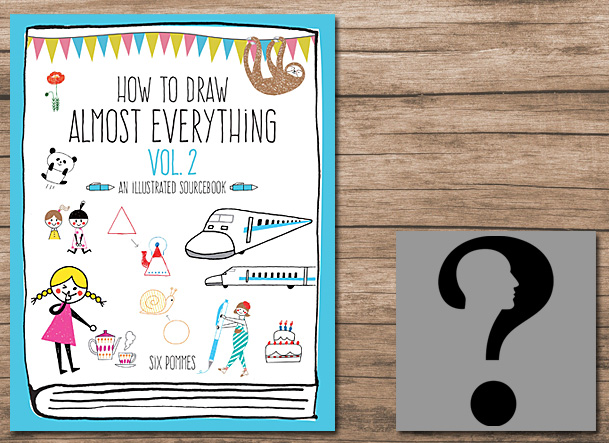
How to Draw Almost Everything Volume 2: An Illustrated Sourcebook by Six Pommes
Earlier this year, Sophie reviewed a collection of eight how-to-draw books and found them to vary dramatically in quality. More recently, she picked up How to Draw Almost Everything Volume 2: An Illustrated Sourcebook by Six Pommes (a pen name for the six contributing Japanese artists) to see how this one would compare.
The “almost everything” part of the title was certainly apt. The book contains hundreds if not thousands of drawing guides covering so many topics that Sophie could be here all day listing them. There are the usual animals and people, these are broken up by type while the people section also covers things like facial expressions, movements, and actions. From here, the book branches out to cover everyday objects (foods, furniture, cosmetics, buildings, and vehicles), patterns and borders, seasonal items for all major holidays, alphabets, and even symbols like musical notes and horoscope characters. Sophie’s digital review copy allowed her to easily search for keywords but, unfortunately, the book doesn’t appear to have been released digitally, which would have hugely improved its usability rather than having to flip through pages looking for things (there is no index).

While the book was indeed packed with drawings, Sophie did feel like they weren’t always great for following. The majority are incredibly simplistic or take big jumps between steps—“draw a circle, now add two lines, voila! Here’s an intricate snowglobe!” This was especially noticeable toward the end of the book when dozens of items were crammed on each page, compared to the beginning where fewer items were afforded more space and detailed stages.
While How to Draw Almost Everything will be a useful reference book, Sophie feels it needs to be part of a larger collection and not a standalone drawing guide. However, artistic kids will no doubt love to receive it and it will make a fantastic stocking-stuffer this holiday season.

What We’ll Build: Plans for Our Together Future by Oliver Jeffers
Oliver Jeffers has been one of Sophie’s favorite picture book authors for many years—she absolutely adored Lost and Found—so when she was offered an opportunity to take a look at his newest book, What We’ll Build: Plans for Our Together Future, she leaped at the chance.
What We’ll Build stars a father and his young daughter as he talks aloud to her about the things they will build together. Some are physical—a door, a house, a hole to hide inside. Others are metaphorical like love and a future, and others still are fantastical—a road to the moon and a boat that cannot be broken (despite looking suspiciously like the Titanic). Together they build and also figure things out. The fortress they build to keep away their enemies later gains a gate so they can meet with them and trade apologies.
Sophie noticed that the dad wears a prominent wedding ring, despite no wife/mother figure ever appearing. He also has what appears to be a tattoo of two X’s on one wrist, symbolism that can represent “the completion of one chapter and the beginning of a new one.” These two things suggested to her that the father is a widower trying to build a new life with his daughter, although this is never suggested outright.
At first, Sophie wasn’t overly impressed by What We’ll Build. The rhyme structure felt broken and disjointed and the story did too, but she now suspects this was intentional to reflect the broken family as they try to rebuild together. She doubts that What We’ll Build will ever become her favorite Jeffers book, but with its beautiful, bold illustrations and heartwarming story, it’s still a very special book indeed and one she would particularly recommend to families going through a difficult change.
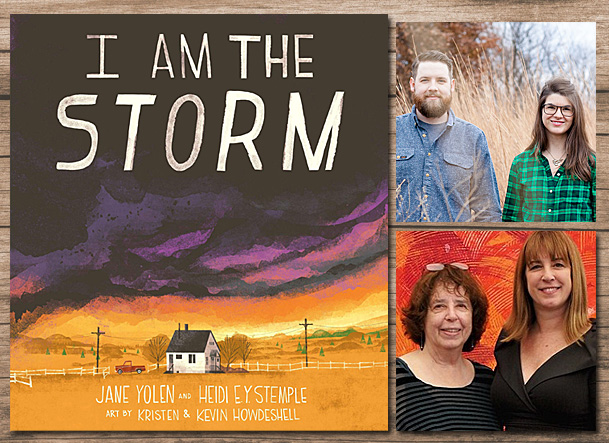
I Am the Storm by Jane Yolen & Heidi E. Y. Stemple, Illustrated by Kristen & Kevin Howdeshell
As climate change continues to cause ever more natural disasters, more and more children will find themselves facing down nature in some of its most frightening forms. Tornadoes, blizzards, wildfires, and hurricanes are daunting for adults, but for the children caught up in their devastation, they can be terrifying. I Am the Storm by mother and daughter team Jane Yolen and Heidi E. Y. Stemple tries to help by offering some reassurance in picture book form.
The book follows four unnamed children, all facing one of the four weather events named above. Each of the children takes shelter with their family—in a storm cellar for the tornado, building a fire for the blizzard, and evacuating from the fires and hurricane—until it is over. They then emerge and show that while the winds, waves, and flames were strong, they are strong too and able to overcome those events. All types of dangerous weather events will eventually end with life returning to normal, and this message is repeated throughout.
While Sophie liked the message of this book and loved the beautiful illustrations throughout, she did worry that it was slightly disingenuous regarding the aftermath of the events. All the children’s homes are left mostly intact by the weather for them to simply move back home a day or so later. The worst damage that any of the homes suffers is tipped over potted plants, dirty ash-covered windows, and a downed tree in the yard. While this is obviously designed to be reassuring to young readers living in areas where dangerous weather events are increasingly commonplace, it doesn’t show the potential realities of returning to a completely destroyed home. While this would have been scarier to include, showing one of the children and their family recovering from what appears to be total destruction may actually be more reassuring in the long run.
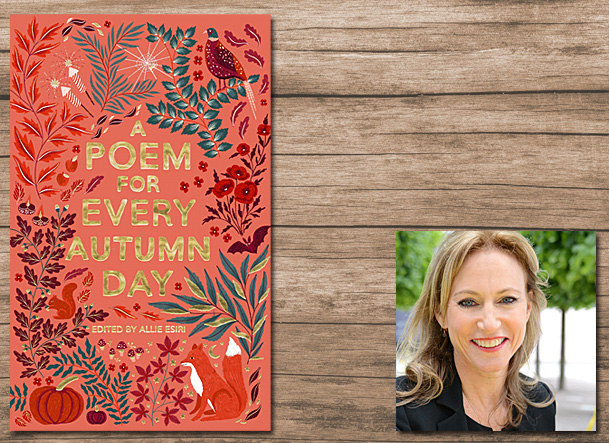
A Poem for Every Autumn Day – Edited by Allie Esiri
Sophie is making a concerted effort to read more poetry of late, and after seeing Allie Esiri’s collection A Poem for Every Autumn Day appearing all over bookstagram, she knew it was a book she wanted to check out.
Containing over 180 poems, this collection actually contains two poems to read every day between September 1st and November 30th—one for the morning and one for the evening. Although there’s nothing to stop you from simply devouring the book in larger chunks too. The poems usually have some connection to the date they have been assigned to. September’s selections are filled with school-related subjects, November is replete with war infused verse thanks to Remembrance Day (do recall this is a British anthology so British holidays take priority), and October is home to spooky subjects. Other poems celebrate specific days like Ada Lovelace Day, Bonfire Night, and the Battle of Hastings.
Many of the poems come from famous names like William Wordsworth, Emily Brontë, Rudyard Kipling, and Sylvia Plath, but there are plenty of lesser-known poets included here too which gives the collection a nice balance between familiar favorites and new discoveries. Sophie found that she remembered many of the poems from her time at school, although not always fondly, it must be said!
A Poem for Every Autumn Day is part of a series and the next volume, unsurprisingly titled A Poem for Every Winter Day, is out now, with spring and summer editions due in 2021. Sophie is already planning to collect the rest of the series and build up an impressive poetry collection in the process. It is worth noting, however, that if you already own Esiri’s previous collections, A Poem for Every Day of the Year and A Poem for Every Night of the Year, then these books simply repeat that content with nothing new.
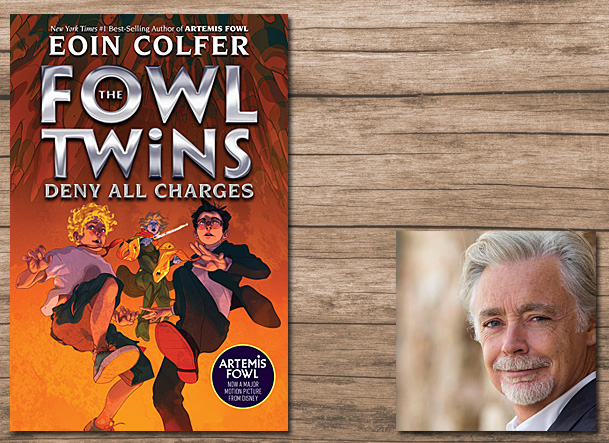
The Fowl Twins: Deny All Charges by Eoin Colfer
A new story by Eoin Colfer in the Artemis Fowl universe is always an exciting and welcome prospect for Scott. After seven years away, Colfer returned in 2019 with a new book about Artemis’ younger twin brothers in a classic, fun, and enjoyable romp befitting the Fowl books to date. Deny All Charges is the second Fowl Twins story and has much to live up to.
While borrowing the Fowl Jet without permission, Myles and Beckett Fowl are shot out of the sky by a missile fired by a mysterious assailant. This leads to the twins being placed under house arrest by both their parents and the fairy police force. However, Myles is abducted so Beckett, with the help of the twins’ fairy minder, Lazuli Heitz, must locate and rescue Myles. As Myles is the brains of the pair, this will be easier said than done and Beckett will need more than his natural fighting skills to save his brother.
As with other Fowl adventures, there’s barely time to pause and catch your breath as the plot rockets along underground, overground, and on water. Witticisms, sarcasm, toilet humor, and copious amounts of genius thinking and planning (and dwarf spit!) abound throughout. This book is aimed at middle-graders and there are parts where the story and action bounce between different groups of characters, which could cause some confusion for younger readers. However, this is another fun and action-packed addition to the Fowl book series which can be enjoyed by all ages.
You don’t necessarily need to have read previous books in the series to enjoy Deny All Charges but Scott does recommend at least reading the previous Fowl Twins novel. Those familiar with the Fowl series will be delighted with this latest book.
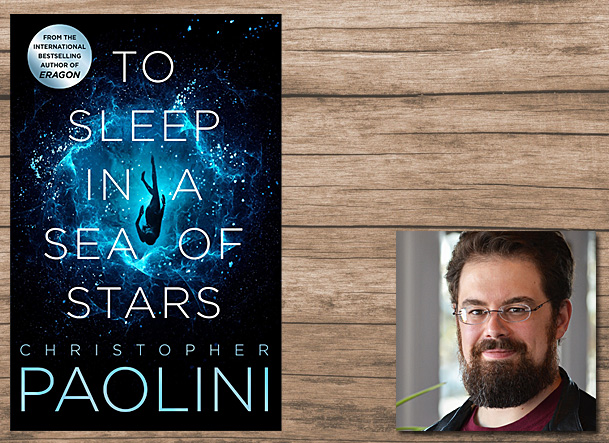
To Sleep in a Sea of Stars by Christopher Paolini
Christopher Paolini is best known for the Eragon Inheritance Cycle fantasy book series, but with To Sleep in a Sea of Stars he makes his first attempt at sci-fi, and hard adult sci-fi at that—this is not a book for kids. Set about 300 years in the future when mankind has spread out across the Milky Way, the story follows Kira Navarez, a xenobiologist. While surveying a planet, Kira discovers an alien relic which bonds itself to her whole being, physically, mentally, and emotionally. This causes a cascade of catastrophes which impacts not only Kira and her colleagues but the whole human race to the point that extinction is a real and nightmarish possibility. Kira must travel light-years across space to save not only herself but the whole of humanity.
A number of reviews praise the book’s fast pace and described it as a “wild ride,” which made Scott wonder if the version he received to read was an early unedited draft. At 880 pages, this book never felt fast—in fact, it was ponderous to the point that he struggled to build up enthusiasm to pick up the book again and carry on reading. Most of the characters are well-rounded and likable enough and the attention to world-building, detail, and real-world physics is admirable, but these can’t overcome the glacially paced plot. Apparently, Paolini spent 10 years writing this book, but if a few days of that had been spent on editing down the story, the plot may have flowed better.
If you are looking for a sci-fi book with an epic scope and realistic physics but a flowing plot, then Scott recommends The Expanse series as an excellent example of how epic sci-fi can be done well.
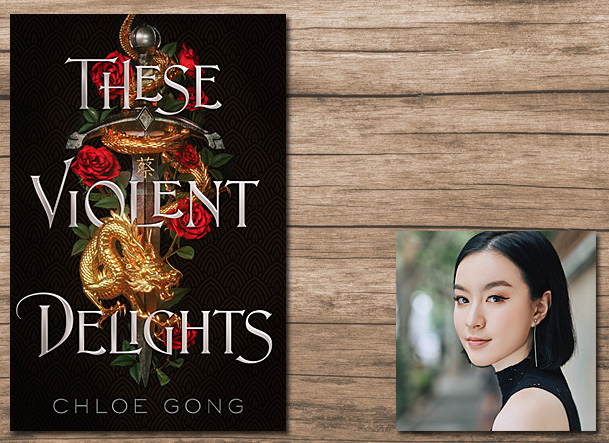
These Violent Delights by Chloe Gong
Rebecca’s only book this month was a retelling of a classic. Chloe Gong took the elements of Shakespeare’s Romeo and Juliet, and like separate strips of paper, switched, flipped, and recolored each one, putting it back into the completely entertaining These Violent Delights. Set in 1920s Shanghai, China, our Romeo and Juliet are the heirs to rival gangs in a city that is slowly breaking apart. Roma Montagov is part of the White Flowers, Russian immigrants there for generations, escaping the upheaval in their home country. Juliette Cai’s father runs the Scarlet Gang of Chinese traditionalists always fighting to keep a hold on their own city.
We come into the story after Roma and Juliette fell in love secretly, and then chose their families over their first love, betraying each other. They meet again four years later, all innocence and romance gone, both fully invested in their own gang but unable to forget how they used to be. There is no time for sentiment in this story, however, because a monster, a scaly creature rising from the river, has been seen in the city. Plus there are strange deaths, with witnesses unable to stop victims from killing themselves. The deaths are affecting both the White Flowers and the Scarlet Gang, forcing Roma and Juliette to work together to save their city.
Although the story takes place in the 1920s with all the glamour of that time, it’s a modern love story with a diverse cast of characters and sexual identity and preferences.
For ages 14 and up.
24% female speaking characters.




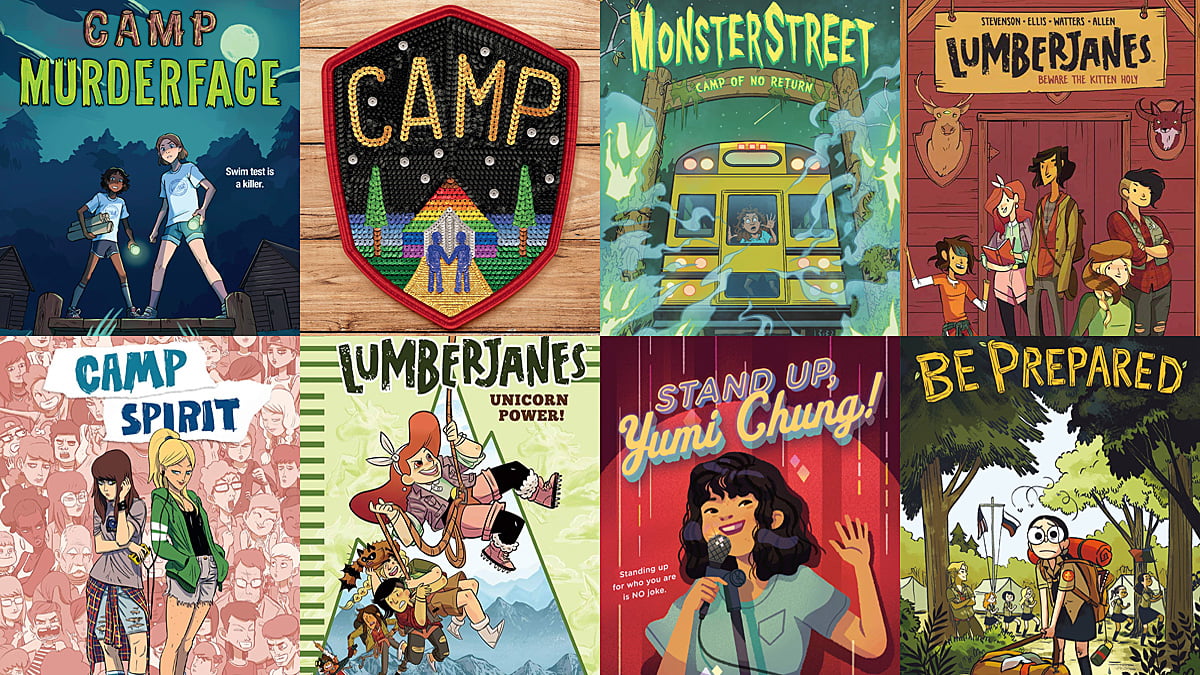
https://studyhippo.com/essay-strange-death-of-silas-deane/ here
Really I appreciate the effort you made to share the knowledge. The topic here I found was really effective to the topic which I was researching for a long time.